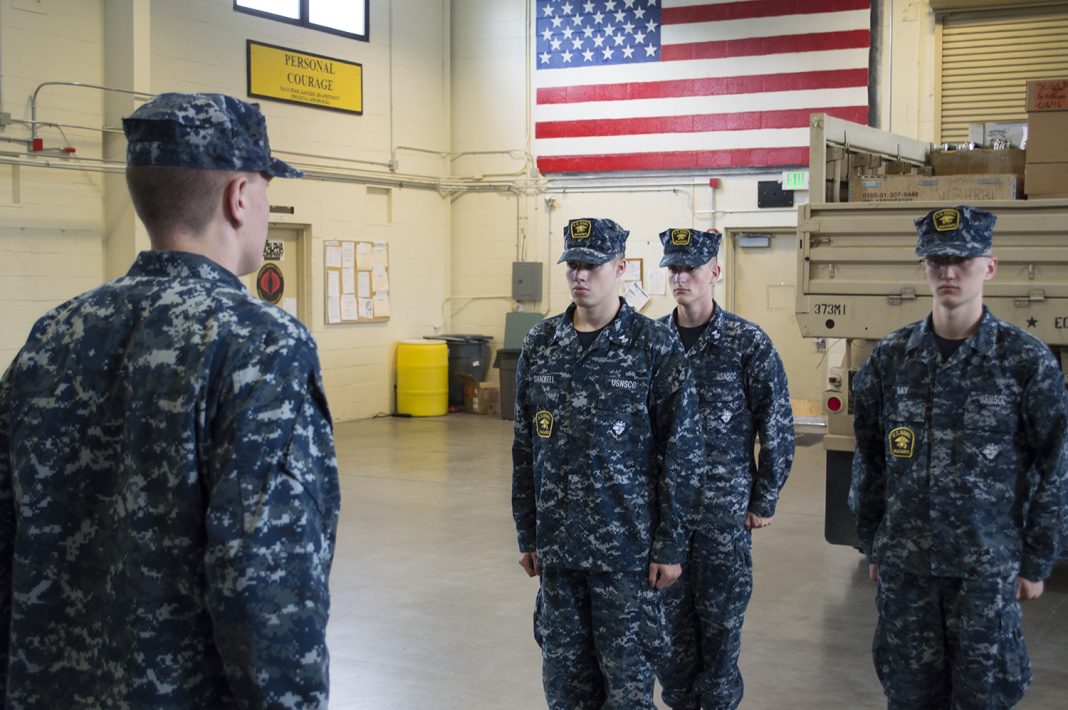Michael Green began thinking about a military career in the eighth grade.
At first it was the Army before a buddy of his brought up the United States Marines Corps. A little research later and Green was sold.
 “Grade-A, best of the best,” said Green, now 17 and an incoming senior at Capital High School, about the Marines. “That’s what I want. I want to push myself.”
“Grade-A, best of the best,” said Green, now 17 and an incoming senior at Capital High School, about the Marines. “That’s what I want. I want to push myself.”
Despite being just 14 at the time, Green found a way to cut his military teeth before he was even allowed to enlist.
It came in the form of the U.S. Naval Sea Cadet Corps.
The U.S. Naval Sea Cadet Corps (USNSCC) is a federally chartered non-profit youth development program for ages 11 through the completion of high school.
“I had never heard of it before. I had a friend who was in it. She has since graduated,” Green said. “Her mom told my mom about it and I’ve been involved ever since.”
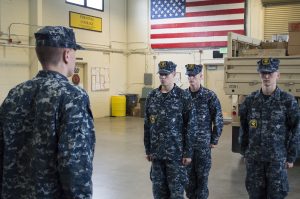
Green, as well as his twin brother, Thomas, belong to the Capitol Battalion, a non-political youth group serving Thurston, Mason and Lewis Counties where cadets receive training aboard Navy and Coast Guard ships and attend specialized training schools for aviation, medics, construction, STEM, in addition to many other training opportunities.
Sponsored by the Navy League of the United States and supported by the U.S. Navy and Coast Guard, the USNSCC is comprised of two programs – the Naval Sea Cadet Corps (NSCC) and the Navy League Cadet Corps (NLCC).
“They both fall under the same unit. The Navy League program is for kids 11 to 13 and it’s kind of the starting program. They have the same kind of concepts, the same kind of correspondence courses with the same opportunities to drill on ships and throughout the nation,” said LTJG Debbie Laur, USNSCC, Commanding Officer, Capitol Battalion. “Our Sea Cadet program is for our older students. They are 14 to 18. Its military based, alcohol- and drug-free. They promote tons of military exposure, but it’s not complete military. They get exposed to law enforcement, firefighting, medical fields. They are exposed to a wide range.”
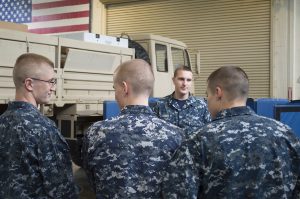
Established in 1962, the U.S. Naval Sea Cadet Corps follows a standardized training program which is designed to:
- develop an interest and ability in seamanship and seagoing skills,
- instill virtues of good citizenship and strong moral principles in each cadet,
- demonstrate the value of an alcohol-free, drug-free and gang-free lifestyle, and
- expose cadets to the prestige of public service and a variety of career paths through hands-on training with our nation’s armed services.
“Our core values are leadership, teamwork, integrity and humility and we breathe that into the program,” Laur said. “It’s training that translates into the civilian world and into college. It’s attention to detail. It’s a focus on teamwork. It’s promoting all those values that members of our community would want young people to have. That’s what this unit does.”
Navy Leaguers do a one-week recruitment orientation, described as their mini-boot camp, while Sea Cadets do a two-week recruitment with training available all over the country.
Green has already trained in marksmanship in California, field operations in Illinois and military ceremony at Whidbey Island.
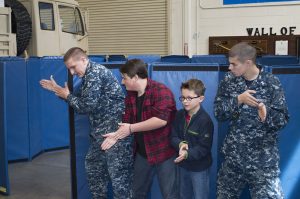
“It’s a bit of a culture shock when you first start out, but very quickly you develop a lot of friendships. It’s a very tightly knit group. It’s really nice having that one team, one fight mentality,” Green said.
“One thing that this program helps with is time management and being efficient in your work. Personally, I know it’s helped me a lot. And it’s helped a lot of people in the program that I’ve worked with mature and develop in those skill areas,” Green added.
The Sea Cadets wear the full naval uniform. Last month the battalion changed over from the Dress Whites to the Dress Blues.
“The only difference they have are the patches. Our rank structure is still the same. The students when they come in, even the Navy Leaguers, have correspondences courses,” Laur said. “They have to do one per drill or more. Some of them do a lot more. Once they do that they have to take an exam online and they can get their promoted rank, but they also have to demonstrate great leadership qualities before we promote them. It’s not just something we give them. They have to earn it.”
Youth, between the ages of 10 and 17 years old, who are interested in joining are invited to be a guest at one of the Sea Cadets monthly drills to experience what the battalion does first-hand.
“What separates this program is they get here at 7:30 in the morning. Boots are shined, ready to go and we drill all day until 4:00 p.m.,” Laur said. “We drill. They do a military weekend drill. They post colors. They do formations. We do inspection. But it’s fun for them. There’s a huge portion that go on to Annapolis for the Coast Guard Academy. They go to West Point from this program. It’s an opportunity to see what the military is all about. And some of them don’t go into the military, but they still learn what leadership is when they come here.”
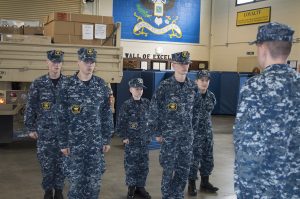
In addition to focusing on cores values such as respect, honor, integrity and discipline, the Sea Cadets also perform a variety of community service benefiting Thurston and surrounding counties.
“It’s really rewarding to watch the cadets I lead in my squad develop not just as cadets but also just as people and citizens,” Green said. “One reason I really enjoy Sea Cadets is when I leave here I know I positively impacted these people’s lives for the better whether I helped them develop maturity or a sense of teamwork with each other, or through the community service we do. It’s just a really good feeling.”








































